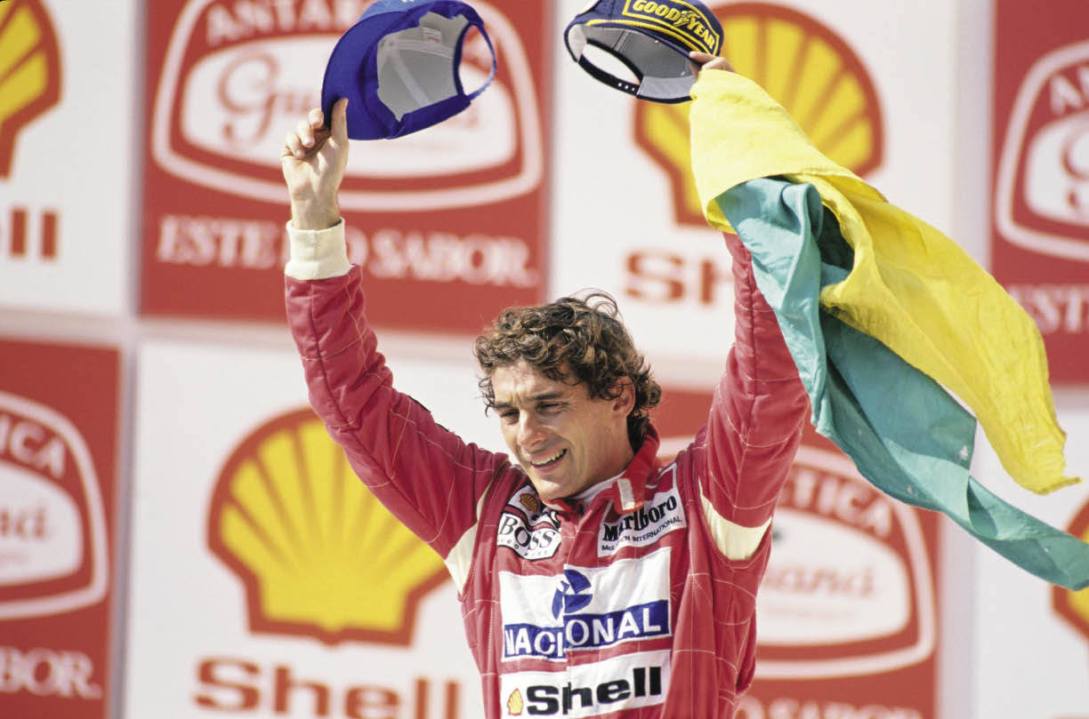I have zero interest in motor racing and zero interest in cars generally yet this documentary about the Formula 1 driver Ayrton Senna knocked me for six, which I think is a cricketing metaphor but can’t say for sure, as I also have zero interest in cricket.
I have zero interest in motor racing and zero interest in cars generally yet this documentary about the Formula 1 driver Ayrton Senna knocked me for six, which I think is a cricketing metaphor but can’t say for sure, as I also have zero interest in cricket. (I quite like ice dancing as a sport but only in the secret hope someone is going to fall over; shaming, but true.) This is not just a good film — it’s a great film: fascinating, exciting, nerve-wracking and profoundly moving. I guess it just goes to show that it is never what a film is about, but how a film tells you what it’s about and now, you’ll be pleased to hear, that’s the end of your film class for this week. Next week, I should inform you, the class will be starting ten minutes earlier and you may want to bring sandwiches, as I can go on a bit.
This is the heartbreaking story of a 34-year-old man killed at the peak of his success — that’s not a spoiler, right?; we’ve absorbed that much over the years, right? — but it isn’t a standard re-telling. The director, Asif Kapadia, who studied film-making at the Royal College of Art and has previously only directed dramatic fiction, combines old footage and off-screen talking heads — journalists, fellow drivers, Ayrton’s doctor and sister — with such flawless orchestration that the film comes together somehow organically. It’s as if it were born this way — complete with its own powerful narrative, and was just there for the taking, which it obviously wasn’t, as hours and hours and hours of footage must have been pored over, and hours and hours and hours of interviews must have been conducted. This is a miracle of editing and if Kapadia had ever been in one of my classes — as if, Asif; they are always madly over-subscribed — I would certainly have awarded him my yearly Miracle of Editing prize, and half my own sandwich.
It helps, I suppose, that Senna appears to have had riveting star quality from the word go, or at least had it by 1984, his opening season as a Formula 1 driver and the film’s starting point. He is, almost literally, a golden boy, with beautiful burnished skin, as well as one of those smiles that can turn your knees to water. He is Brazilian, but this is no rag-to-riches story, as he came from a well-to-do family who supported him as a child go-kart racer. His racing life seems to be almost entirely on camera, from those go-karting days through to working his way up the Formula 1 ladder and winning three World Championships. There is some remarkable footage; not just the TV coverage of the time, but also white-knuckle in-car shots, poignantly grainy home videos, and unseen footage drawn from the F1 archives showing, for example, tense, pre-race meetings as the drivers take on the governing body, who do not come out of this well. (Was the car Senna died in safe enough? Had the governing body put power and money before all else? Was it the Fifa of its day?)
I still don’t, actually, get motor-racing as a sport, or why anyone would want to watch cars going fast around big circles, but I did get why Senna became a global superstar. He had this thrilling raw ability, passing cars before they could even figure out what was happening, but it wasn’t just that. He was also, as well as intensely competitive, thoughtfully eloquent, stood up to anything he thought was unfair, had that devastating smile, and was deeply spiritual. ‘Ayrton is dangerous because he believes in God and he believes he can’t get killed,’ says the French driver Alain Prost, Senna’s fiercest rival and, at times, deadliest enemy. Ayrton’s sparring with Prost, both on and off the track, paints Prost as the dastardly one, but I did sometimes wonder if the editing swerved too much in favour of Ayrton.
This works as such a compelling human drama that even I, someone who doesn’t like to go more than 30mph and is frightened of motorways, was fantastically engrossed from beginning to end. Of course, the film is haunted by what we know will happen, and does happen, at the San Marino Grand Prix in 1994. It is devastating, and we feel his death as an aching hole where a life should be. At least ice-dancers only ever get a grazed knee. This is why I like it better.






Comments